BullFrogs
- March 29, 2024
- 0 comment
Bullfrogs, known for their distinct croaking calls and robust appearance, are among the largest amphibians native to North America. Sporting smooth, olive-green skin adorned with dark blotches, these frogs boast powerful hind legs adapted for leaping and swimming. Their presence is commonly found in freshwater habitats like ponds, lakes, rivers, and marshes across the eastern United States, from the Gulf Coast to the Great Lakes region. During breeding season, male bullfrogs produce resonant calls to attract females, leading to the laying of eggs in shallow waters.

Their diet is diverse, ranging from insects to small fish and even other frogs, showcasing their role as opportunistic predators. However, their introduction to non-native habitats has raised concerns about their impact on local ecosystems, often outcompeting indigenous species. Despite being prized in some cultures for culinary purposes, bullfrogs also serve as subjects of scientific research due to their size and adaptability. Efforts to manage their populations and preserve native habitats remain crucial for maintaining biodiversity and ecological balance.
| Specification | Description |
|---|---|
| Scientific Name | Lithobates catesbeianus |
| Average Length | 6-8 inches (15-20 centimeters) |
| Skin Color | Smooth, olive-green with dark blotches |
| Underbelly Color | White or yellow |
| Habitat | Freshwater ecosystems: ponds, lakes, rivers, marshes |
| Native Range | North America, primarily eastern United States |
| Breeding Season | Spring and early summer |
| Call | Deep, resonant croaking |
| Diet | Insects, small fish, crustaceans, other frogs |
| Lifespan | 7-9 years (in the wild) |
| Predators | Birds of prey, snakes, raccoons, larger frogs |
| Cultural Significance | Culinary use in some cultures, subject of research |
| Conservation Status | Not endangered, but populations may be at risk |
Bullfrogs
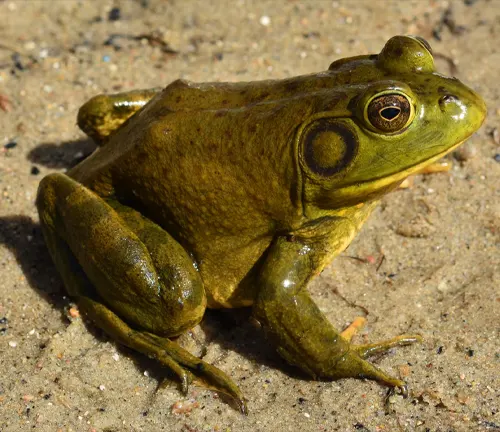
Bullfrogs are fascinating amphibians known for their distinctive croaking calls and robust appearance. In this article, we delve into their physical characteristics, habitat, behavior, ecological impact, commercial significance, conservation efforts, and more.
Physical Characteristics
Size and Appearance
Bullfrogs are renowned for their impressive size among frog species. Adults typically measure between 6 to 8 inches (15 to 20 centimeters) in length, with some individuals growing even larger. They possess a robust build with smooth, olive-green skin adorned with dark blotches or mottling. This coloration provides effective camouflage in their natural habitats, blending seamlessly with the surrounding vegetation. Additionally, bullfrogs have a distinctive white or yellow underside, further aiding in their concealment from potential predators.
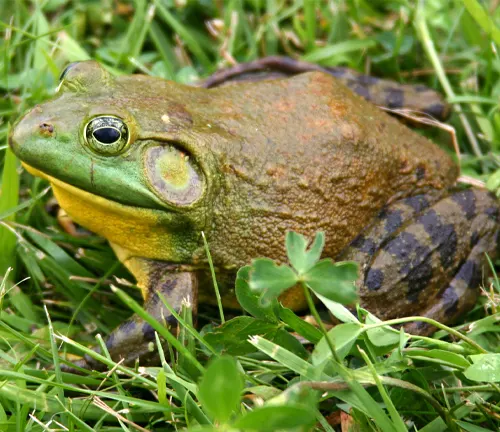
Their eyes and nostrils are positioned on top of their heads, allowing them to remain partially submerged in water while keeping a vigilant watch for prey or danger. One of the most striking features of bullfrogs is their powerful hind legs, which are exceptionally well-developed for both jumping and swimming. These legs enable bullfrogs to cover significant distances with remarkable speed and agility, whether leaping from lily pad to lily pad or swiftly navigating through the water in pursuit of prey. Overall, the size and appearance of bullfrogs exemplify their adaptability and prowess as amphibious predators in their native habitats.
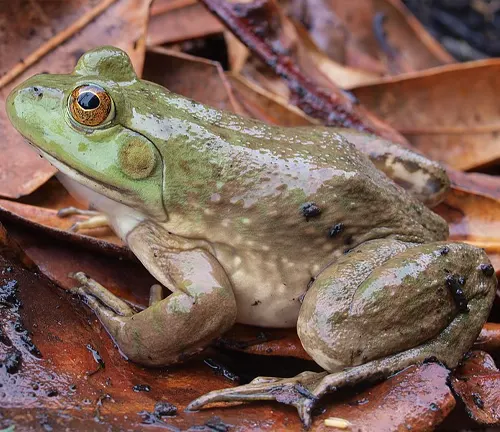
Adaptations for Survival
Bullfrogs have evolved a suite of adaptations that contribute to their remarkable survival in diverse environments. One key adaptation is their ability to absorb oxygen through their skin, allowing them to respire efficiently both in and out of water. This trait enables bullfrogs to remain submerged for extended periods without needing to surface for air, providing a distinct advantage when evading predators or ambushing prey. Additionally, bullfrogs possess powerful hind legs with muscular thighs, enabling them to execute explosive jumps over considerable distances.
This adaptation not only aids in their escape from danger but also facilitates efficient hunting by allowing them to swiftly close in on unsuspecting prey. Furthermore, bullfrogs have keen senses of sight and hearing, allowing them to detect movement and sound in their surroundings with precision. Their large, protruding eyes provide excellent depth perception, while their tympanic membranes, located behind their eyes, enable them to detect vibrations and perceive subtle sounds, such as the rustle of nearby prey or the approach of a predator. Combined, these adaptations make bullfrogs formidable predators and resilient survivors in a variety of habitats, contributing to their success as a species.
Habitat and Distribution
Native Range
Bullfrogs are native to North America, primarily inhabiting freshwater ecosystems such as ponds, lakes, rivers, and marshes. They have a wide distribution across the continent, ranging from the southern United States, including states like Texas, Florida, and Louisiana, all the way up to the northern regions, including the Great Lakes area and parts of Canada. Within their native range, bullfrogs play an integral role in the local ecosystems, serving as both predators and prey and contributing to the overall biodiversity of their habitats.
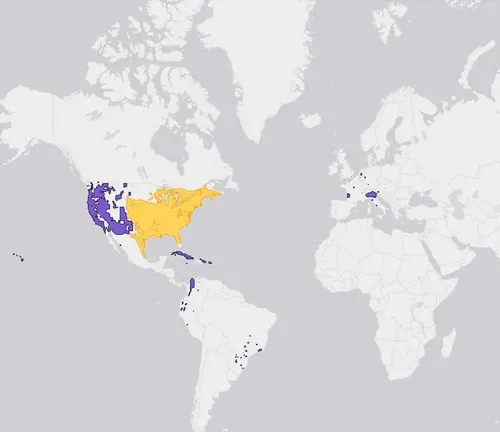
Introduced Populations
Due to their popularity in culinary and scientific circles, bullfrogs have been introduced to various parts of the world beyond their native range. These introductions have occurred in regions such as Europe, Asia, South America, and Oceania. In many cases, bullfrogs were deliberately introduced for purposes such as pest control, food production, or scientific research.

However, these introductions have often resulted in unintended ecological consequences. In areas where they have been introduced, bullfrogs can outcompete native species for resources, disrupt food webs, and spread diseases. Their ability to thrive in diverse habitats and reproduce rapidly has led to concerns about their impact on local ecosystems and biodiversity. As a result, efforts to manage introduced populations of bullfrogs and mitigate their ecological impact are underway in various regions around the world.
Behavior and Lifecycle
Breeding Habits
Bullfrogs exhibit fascinating breeding habits that are integral to their life cycle. During the breeding season, which typically occurs in the spring and early summer months, male bullfrogs emit deep, resonant calls to attract females. These calls, often likened to the sound of a jug being struck, can carry over long distances and serve as a means of communication between individuals. When a receptive female approaches, the male initiates amplexus by grasping her from behind with his forelimbs. As the female lays her eggs in shallow water, the male simultaneously releases sperm to fertilize them externally.
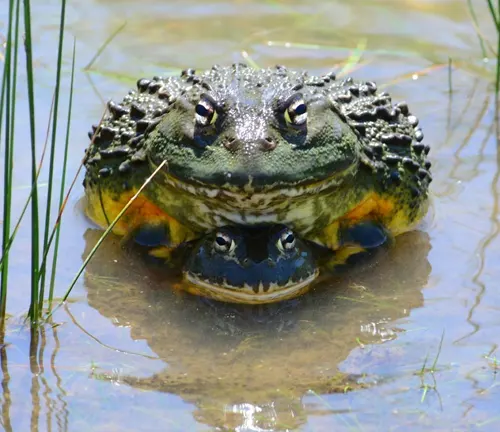
The resulting egg clusters, known as egg masses, adhere to vegetation or other submerged objects and develop over time into tadpoles. This reproductive strategy, characterized by external fertilization and aquatic development of offspring, is a key adaptation that has contributed to the success of bullfrogs in their native habitats.
Feeding Behavior
Bullfrogs are opportunistic feeders with a voracious appetite and diverse diet. As ambush predators, they employ a sit-and-wait strategy, remaining motionless until potential prey comes within striking distance. Their diet consists of a wide range of organisms, including insects, small fish, crustaceans, mollusks, and even other frogs. Bullfrogs are known for their ability to engulf prey items whole, aided by their large mouths and powerful jaws.
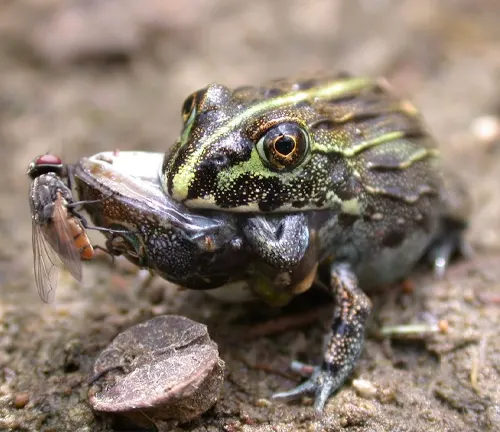
Their hunting prowess is further enhanced by their lightning-fast reflexes and remarkable agility, allowing them to swiftly capture elusive prey such as flying insects or swiftly swimming fish. Interestingly, bullfrogs are also capable of consuming prey items that are larger than their own heads, thanks to their ability to stretch their throats and temporarily expand their mouths. This flexible approach to feeding, coupled with their adaptability to various aquatic environments, makes bullfrogs highly successful predators and top-tier consumers within their ecosystems.
Ecological Impact
Invasive Species Concerns
The introduction of bullfrogs to non-native habitats has raised significant concerns about their status as invasive species. In areas where they have been introduced, bullfrogs can disrupt local ecosystems by outcompeting native species for resources, predating on native fauna, and altering food webs. Their rapid reproduction rates and generalist feeding habits contribute to their success as invaders, often resulting in declines or extinctions of native amphibians, fish, and invertebrates.
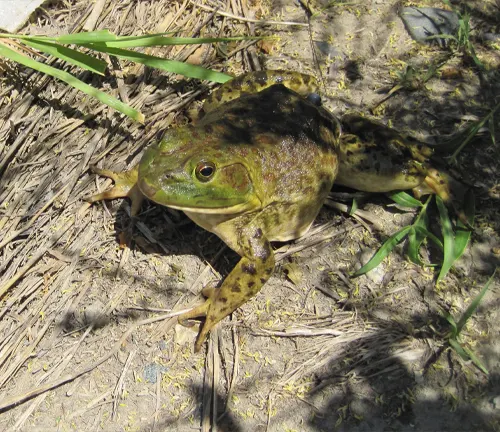
Additionally, bullfrogs can act as carriers of diseases and parasites that may further impact native wildlife populations. Efforts to control and mitigate the spread of invasive bullfrog populations are essential for protecting biodiversity and maintaining ecological balance in affected ecosystems.
Predation and Competition
Bullfrogs are formidable predators with a diverse diet, preying upon a wide range of organisms including insects, small fish, crustaceans, and even other frogs. Their predatory behavior can have significant impacts on local prey populations, particularly in areas where they have been introduced as invasive species. Additionally, bullfrogs may compete with native predators for food and habitat resources, further exacerbating ecological imbalances.
Their efficient hunting abilities and adaptability to various environments make them formidable competitors in aquatic ecosystems, posing challenges for native species survival.
Commercial and Cultural Significance
Culinary Use
In some cultures, bullfrog meat is considered a delicacy and holds cultural significance. The legs, in particular, are prized for their tender meat and are often harvested for culinary purposes. Bullfrog legs are prepared in a variety of dishes, including sautéed, fried, or grilled preparations. While culinary use of bullfrogs provides economic opportunities for communities and individuals, overharvesting can pose threats to wild populations. Sustainable harvesting practices and regulations are necessary to ensure the long-term viability of bullfrog populations and the ecosystems they inhabit.

Scientific Research
Bullfrogs are valuable subjects for scientific research due to their large size, hardiness, and adaptability to laboratory settings. They have been extensively studied in fields such as physiology, developmental biology, ecology, toxicology, and behavior. Bullfrogs serve as model organisms for investigating various biological phenomena, providing insights into fundamental processes such as metamorphosis, reproduction, and immune function. Furthermore, studies on bullfrogs contribute to our understanding of amphibian declines, environmental pollution, and the impacts of climate change on aquatic ecosystems.
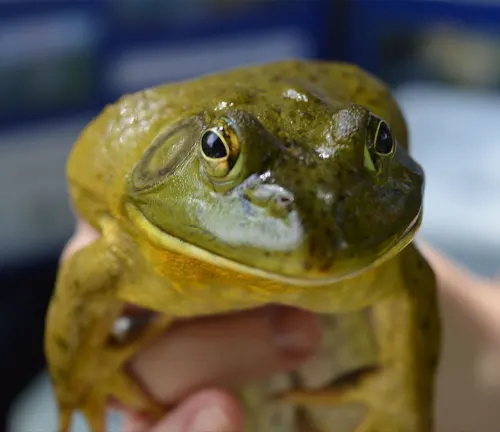
Conservation Efforts
Management Strategies
Efforts to manage bullfrog populations in non-native habitats often involve a combination of strategies aimed at controlling their spread and mitigating ecological impacts. These strategies may include habitat modification, removal of breeding sites, targeted eradication programs, and public education campaigns. Additionally, regulations and policies may be implemented to regulate the trade and transport of bullfrogs to prevent further introductions to new areas. Collaboration between government agencies, conservation organizations, researchers, and local communities is essential for developing effective management strategies that balance ecological conservation with societal needs.
Importance of Preserving Native Habitats
Preserving native habitats is crucial for maintaining biodiversity and ecosystem health, including the conservation of native amphibian species like bullfrogs. Healthy wetlands, rivers, and other aquatic ecosystems provide essential habitat for bullfrogs and support a myriad of other plant and animal species. Protecting and restoring native habitats helps to ensure the long-term survival of bullfrogs and other native wildlife, while also providing valuable ecosystem services such as water filtration, flood control, and carbon sequestration. By safeguarding natural habitats, we can promote resilience to environmental changes and sustain biodiversity for future generations.
Different Species
American Bullfrog
(Lithobates catesbeianus)
The American bullfrog is the largest and most widely recognized species of bullfrog. It is native to North America and is known for its deep, resonant croaking call.
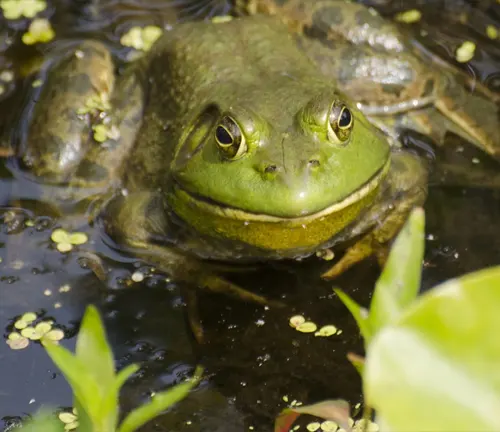

African Bullfrog
(Pyxicephalus adspersus)
The African bullfrog, also known as the pixie frog, is native to sub-Saharan Africa. It is characterized by its large size and robust build, with males often exhibiting bright yellow coloration during the breeding season.
Chinese Bullfrog
(Hoplobatrachus rugulosus)
The Chinese bullfrog is native to East Asia, particularly China and Taiwan. It is similar in appearance to the American bullfrog but has distinct markings and coloration.
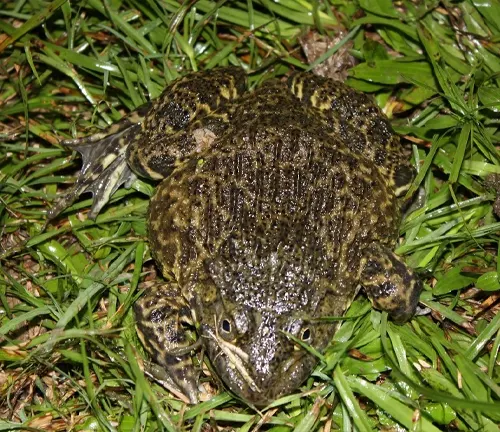
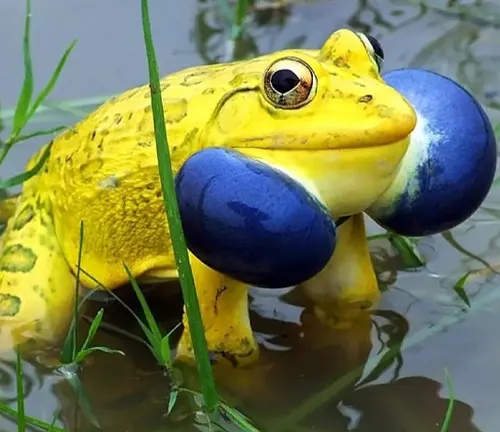
Indian Bullfrog
(Hoplobatrachus tigerinus)
The Indian bullfrog is native to South Asia, including India, Bangladesh, and Nepal. It is known for its loud croaking call and is often found in agricultural areas and freshwater habitats.
Frequently Asked Questions (FAQs)
- What do bullfrogs eat?
Bullfrogs are opportunistic feeders and consume a variety of prey, including insects, small fish, crustaceans, and even other frogs. - Where do bullfrogs live?
Bullfrogs are typically found in freshwater ecosystems such as ponds, lakes, rivers, and marshes across North America and other parts of the world. - How big do bullfrogs get?
Bullfrogs are among the largest frog species, with adults reaching lengths of up to 6-8 inches (15-20 centimeters). - What sound do bullfrogs make?
Male bullfrogs produce deep, resonant calls during the breeding season to attract females. These calls are often described as a loud “jug-o-rum.” - Do bullfrogs hibernate?
Bullfrogs are ectothermic, meaning they rely on external sources of heat to regulate their body temperature. During colder months, they may enter a state of dormancy but do not undergo true hibernation. - How do bullfrogs reproduce?
Bullfrogs reproduce through external fertilization. During mating, males grasp females from behind and release sperm as the female lays eggs. The eggs are then fertilized externally in the water. - Can bullfrogs survive in captivity?
Yes, bullfrogs can be kept in captivity with proper care and habitat setup. However, they require a large, well-maintained enclosure with access to water and suitable hiding spots. - Are bullfrogs invasive species?
Bullfrogs are considered invasive in some regions where they have been introduced. Their voracious appetite and ability to outcompete native species for resources can disrupt ecosystems and lead to declines in biodiversity. - Do bullfrogs have any predators besides humans?
Yes, bullfrogs have natural predators such as birds of prey, snakes, raccoons, and larger frogs. - How do bullfrogs defend themselves from predators?
Bullfrogs rely on camouflage, their powerful hind legs for jumping, and their ability to quickly retreat into water to evade predators. - Are bullfrogs nocturnal?
Bullfrogs are primarily active during dusk and nighttime, although they may also be active during the day, especially in cooler weather.


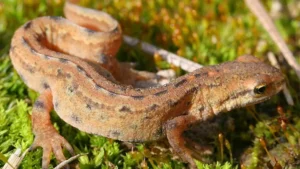

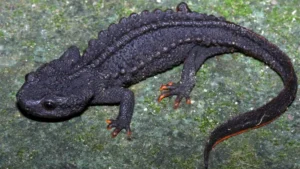
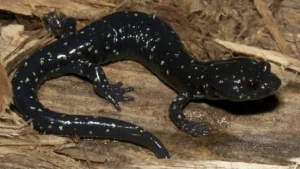
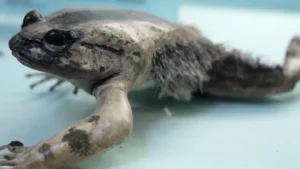
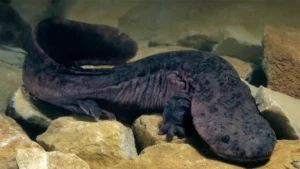

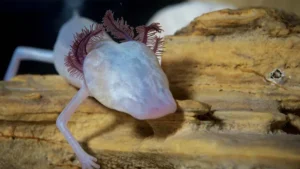
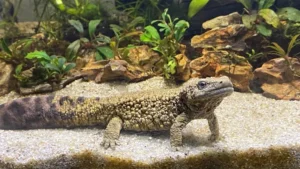

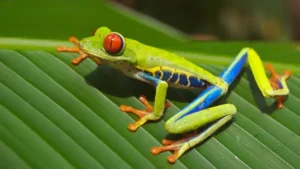
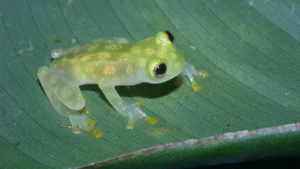
Leave your comment